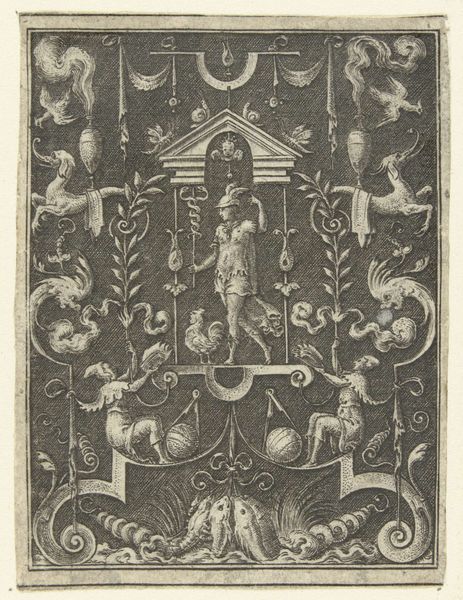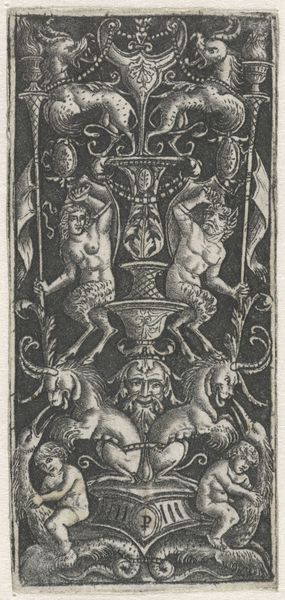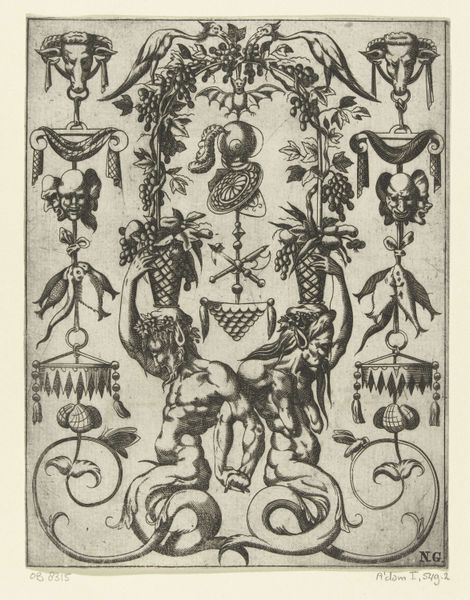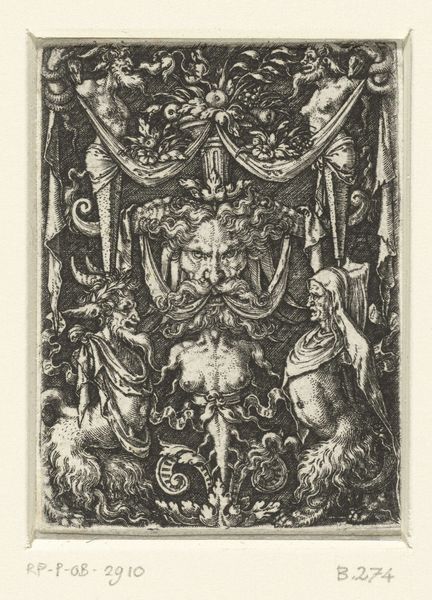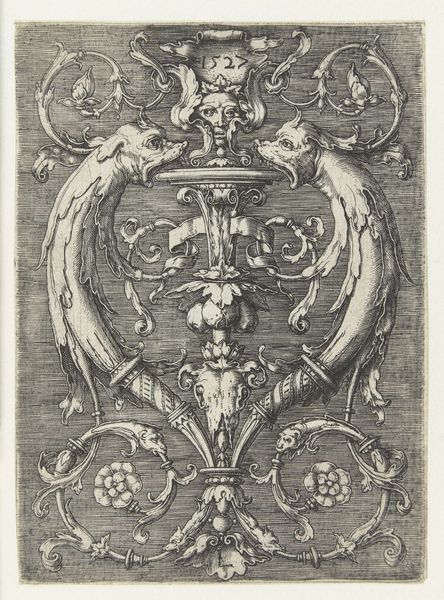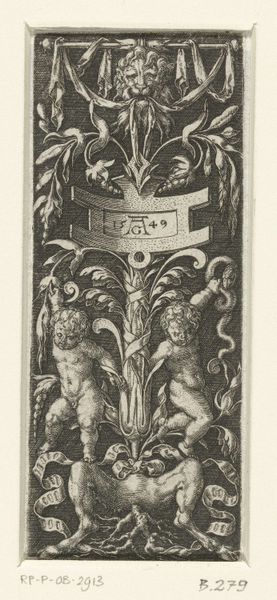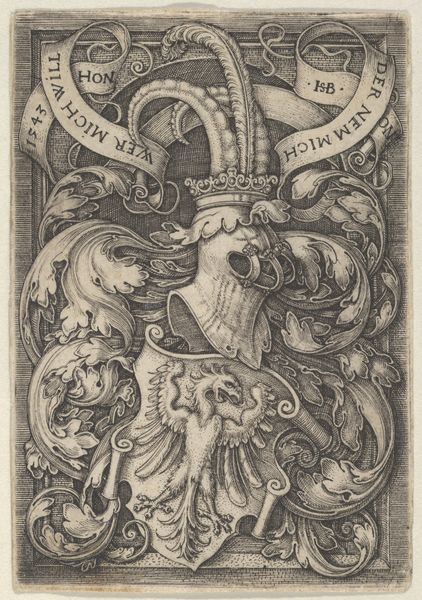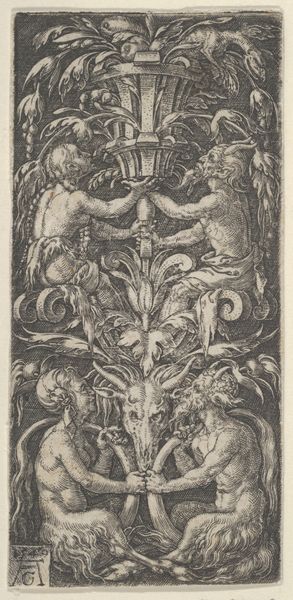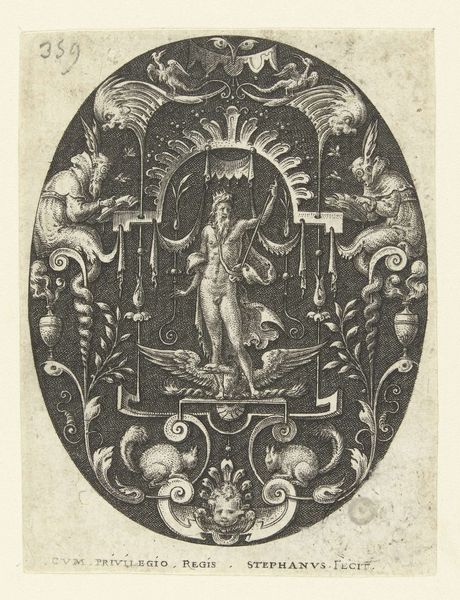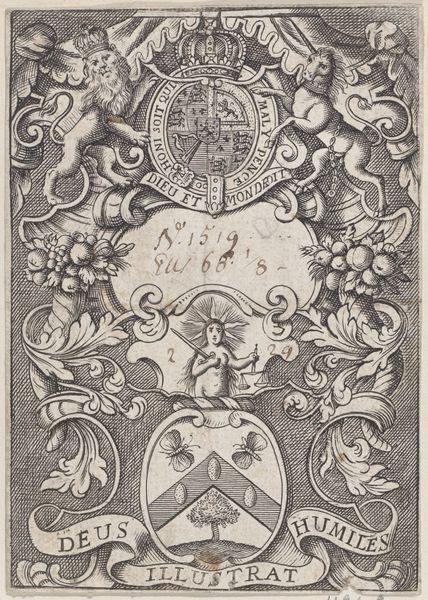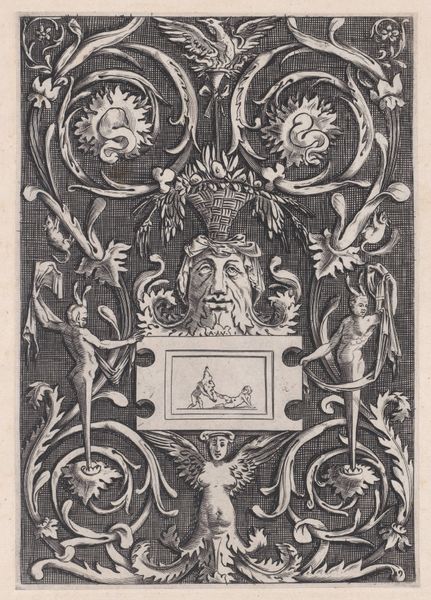
Dimensions: height 136 mm, width 127 mm
Copyright: Rijks Museum: Open Domain
Curator: This print, titled "Margaretha van Henegouwen te paard," dating from 1517 to 1530, presents quite the visually striking and intricately engraved composition. Editor: It’s dense. There's almost too much to take in. It feels incredibly symbolic. This piece has this peculiar quality… something about the female figure feels empowering but also constrained. Curator: The piece seems like it demands close observation to tease out the underlying structures. Do you find the symmetrical organization of elements significant? It establishes a particular rhythm through repetition. Editor: Absolutely. Symmetry in art can suggest social order, or at least the aspiration for it. Looking closer, all those fantastical creatures feel more monstrous than majestic. It provokes a certain sense of anxiety and perhaps even of oppression that certainly feels true for the women rulers of this era. Curator: Precisely, what makes this engraving fascinating is how the interplay between classical motifs and symbolic representation create intricate layered meaning. One may understand it with semiotics by dividing each element individually for what it symbolizes to further examine the artwork as a whole. Editor: I wonder if the monstrous figures might represent some very real adversaries or perhaps even internal struggles Margaretha van Henegouwen confronted as a woman leader. Curator: That certainly shifts perspective toward looking for some context of class, gender and politics. These prints functioned in ways beyond aesthetic contemplation. What stories and assumptions are built around such representations of female power? Editor: Considering the historical lens brings out potent stories. While formal elements command immediate viewing, cultural and societal nuances deeply shape the image itself. This fusion highlights how powerful artworks trigger critical dialog about their world and our own. Curator: Indeed, analyzing prints like these lets us explore the intrinsic aesthetic values of a work as well as to ask very meaningful and poignant questions around social justice, race and power, making for a very rewarding investigation.
Comments
No comments
Be the first to comment and join the conversation on the ultimate creative platform.
